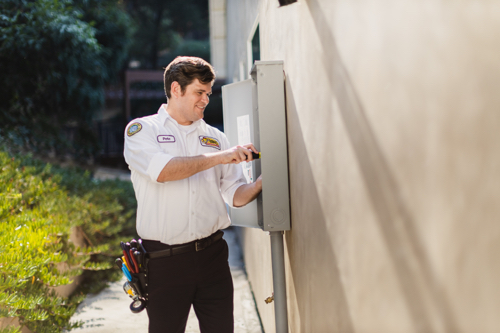Not All Surge Protectors Are Created Equal (And Why You Should Care!)
Hey there! As someone who learned about surge protectors the hard way (RIP my gaming PC), I’m here to share what I’ve discovered about these essential but often misunderstood devices. Spoiler alert, that $5 power strip might not be giving you the protection you think it is!
What’s a Surge Protector?
Let’s start with the basics. You know those power strips you’ve got all over your house? Not all of them are actually surge protectors (mind-blown, right?). A true surge protector acts like a bouncer at an exclusive club, it keeps the bad stuff (excess voltage) out and lets the good stuff (normal power) through to your devices. But here’s the kicker, some bouncers are better at their jobs than others!
The Sciencey Bit (Don’t Worry, I’ll Keep It Simple!)
Okay, here’s how these things actually work. Inside every surge protector is something called a Metal Oxide Varistor (MOV) think of it as a pressure release valve. When too much power tries to get through, this little hero diverts the extra electricity away from your expensive gadgets. Pretty cool, right? But just like superheroes, some MOVs are more powerful than others.
The Numbers Game: Joules and Volts
Now, I know what you’re thinking, “Please, no math!” But stick with me here, because these numbers matter. When you’re shopping for a surge protector, you’ll see something called a “joule rating.” Think of joules like a protective shield – the more you have, the stronger your defense.
Here’s a quick guide:
- Under 1000 joules: Good for small stuff like phone chargers
- 2000-3000 joules: Perfect for your TV and gaming consoles
- Over 3000 joules: What you want for your home office or expensive electronics
There’s also something called “clamping voltage” the lower this number, the faster your surge protector jumps into action. It’s like having a really alert security guard!
The Good, The Bad, and The Ugly
Let me break down the different types of surge protectors you’ll find out there:
- Basic Power Strips with Surge Protection: These are like having a mall cop guard your stuff. Better than nothing, but don’t trust them with your gaming PC!
- Advanced Surge Protectors: Now we’re talking! These often come with neat features like indicator lights (so you know they’re still working) and sometimes even warranty protection for your connected devices.
- Whole-House Surge Protectors: The Navy SEALS of surge protection. They protect everything in your house, but you’ll need an electrician to install them.
Real Talk: Which One Do You Need?
Here’s how I think about it, How much would it hurt to replace what you’re plugging in?
For example:
- Your phone charger and desk lamp? A basic surge protector is probably fine
- Your new 65″ OLED TV and PS5? Spring for something beefier
- Running a home office with expensive equipment? Consider whole-house protection plus high-end surge protectors.
- The Maintenance Scoop
Here’s something most people don’t know, surge protectors wear out over time! Every time they take a hit for your electronics, they get a little weaker. Most modern ones have indicator lights, but if yours doesn’t, consider replacing it every 2-3 years. Trust me, it’s cheaper than replacing your electronics!
Don’t Make My Mistakes
Remember that gaming PC I mentioned? I had it plugged into what I thought was a surge protector, but it was actually just a power strip. One lightning storm later, and… well, let’s just say I learned an expensive lesson about reading labels carefully!
Smart Shopping Tips
When you’re ready to buy a new surge protector, here’s what to look for:
- A UL rating (it’s a safety thing – very important!)
- That joule rating we talked about earlier
- Warranty information (some good ones will actually cover your connected devices)
- Indicator lights (so you know when they needs replacing)
The Bottom Line
Look, I get it, surge protectors aren’t exactly exciting. But neither is having to replace your expensive electronics because of a power surge! Think of it as insurance for your gadgets. Spend a little more now, and you could save yourself from a major headache later.
Quick tip before I wrap up, check what you’re currently using right now. Go ahead, I’ll wait! If it doesn’t specifically say “surge protector” on it, or if it’s more than a few years old, it might be time for an upgrade.
